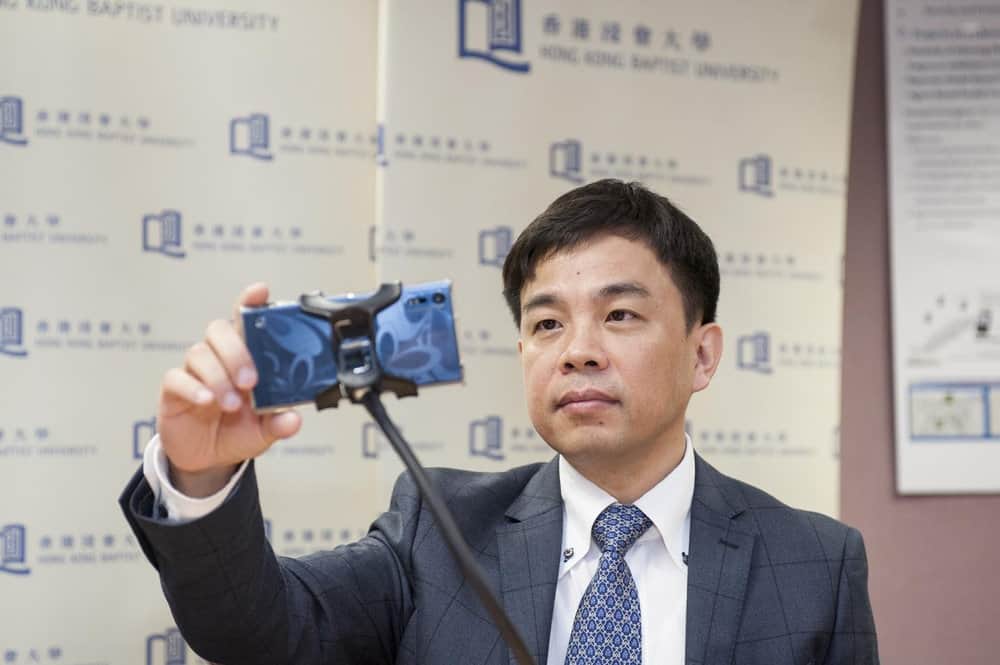
A Hong Kong team has applied for a patent to make fatigue detection possible on phones
Fatigued and drowsy driving remains a major cause of vehicle accidents in the U.S., but as yet, the only solutions have been lane departure warning systems and in-cab, driver-focused camera systems which many drivers don’t like for their intrusive nature.
According to a 2016 report from the Governors Highway Safety Assn. (GHSA), nearly 83.6 million sleep-deprived people drive each day and 5,000 deaths in 2015 were attributed to drowsy driving. In fact, some 10-20% of large truck and bus crashes are due to drowsy driving.
A new solution, though, may be on the horizon and it all it requires is a smartphone.
Hong Kong Baptist University (HKBU) Computer Science scholar Professor Cheung Yiu-ming and his team have developed a system that detects drowsy drivers and alerts them using a generic smartphone. The app uses a smartphone’s real-time video to track and analyze a driver’s facial features, particularly changes in eyelids and head position.
“With this system pre-installed in a generic smartphone, a driver just has to put it near the steering wheel with the front camera facing him in his normal driving position,” researchers explained. “When the camera captures features like drooping eyelids, drowsiness or even nodding off, an alarm is automatically set off. To ensure that the driver is awakened, the driver has to turn off the alarm either by voice or by hand.”
The invention won the Gold Medal with Distinction in the Computer Science Category and the Swiss Automobile Club Prize at the 45th International Exhibition of Inventions of Geneva in April. The research team has applied for a U.S. patent.
Professor Cheung said the system can activate the rear camera of the smartphone so it can also be used as a forward-facing driving recording system. The system requires no sensors or any other cameras.
With no comparable low-cost systems such as this, Professor Cheung believes the system is not only appropriate for commercial operations, but also for consumer applications.
For fleets interested in more robust, permanent solutions, there are also options. Lytx and Seeing Machines are two of the companies who make drowsy driving camera systems.
Lytx’s ActiveVision system provides protection against not just drowsy and distracted driving, but safety-critical situations such as following too close.
The ActiveVision service uses advanced analytics to identify patterns of behavior – such as lane departure or following too close – that are indicative of distracted and/or drowsy driving, and then uses video to help pinpoint the possible root causes. When combined with the Lytx DriveCam safety program, the ActiveVision service is a comprehensive program that can help drivers improve performance and help mitigate risk.
Seeing Machines launched its system in 2015. According to Erica Collins, general manager-fleet support, the system uses a sensor to monitor eye and face movement and determines whether those movements, such as frequently looking down or to one side, constitute a distracted driving event. Frequent and prolonged eyelid closure could also indicate a drowsy or fatigued situation, she said.
Once the system detects a potential problem, an alert is sounded and a notification is sent to a call center. Call center personnel notify the fleet of a potential situation and the fleet then has the option of contacting the driver.
Whether it is a more robust solution such as what Lytx or Seeing Machines offers, or a basic solution like the one developed by Professor Cheung and his team, drowsy driving remains a significant roadway threat that needs more technological solutions.










